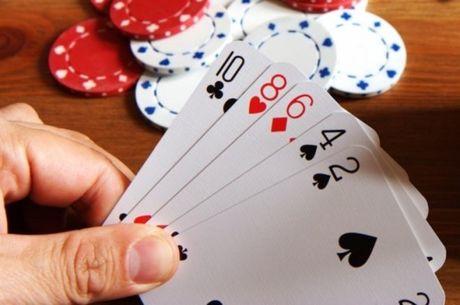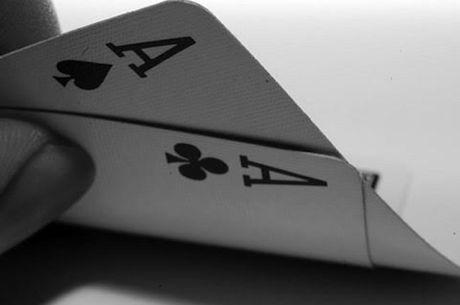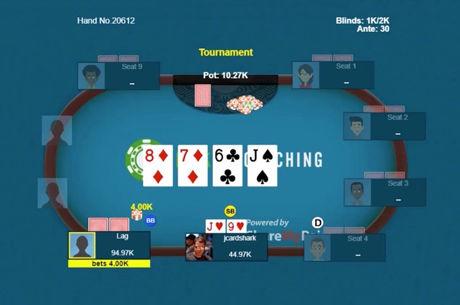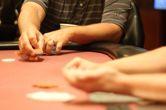Hand Review: Three-Betting a Solid Player and Turning Equity

Covering live poker tournaments for a living affords me the opportunity to see countless thousands of hands played out, many of which offer interesting and potentially valuable insights into how players �� both amateurs and professionals �� play the game. In this ongoing series, I��ll highlight hands I��ve seen at the tournaments I��ve covered and see if we can glean anything useful from them.
The Scene
It's back to the Mid-States Poker Tour Meskwaki $1,100 Main Event for this week's hand. Today we'll get away from preflop wars against short stacks that have been the focus the last couple of weeks, and this time look at a hand with a little more of a postflop feel.
It was Level 6 (200/400/50) and the most recognizable opponent at my table was Aaron Johnson, a Midwest pro who has been having a hot start to 2018. I've played with and covered Johnson before and he generally plays a pretty tight, solid game but will definitely pick his spots to make moves. He started the following hand with about 12,000, just over half of a starting stack, while I had a little over 30,000.
The Action
Johnson opened for 900 from middle position, and I three-bet to 2,500 with Q?10? in the cutoff. The players behind me folded and Johnson put in a call, so we went heads up to the K?7?2? flop. Johnson checked and then called my bet of 1,800.
The turn brought the 8? and Johnson checked again. I considered briefly before putting him all in for his last 7,500 or so. He quickly called with K?10? and the river bricked off for him to double up.
Concept and Analysis
To start off this hand, there's a bit of a tricky preflop decision with Q?10? facing an open from a solid player in middle position.
In general, I think a lot of players would call in this spot and that's certainly tempting. After all, Q?10? is a fun hand to play, especially when you have position throughout the hand, though of course the player on the button could still enter the pot and change that. Against many players, I do think calling is the right play here as it's good to take flops with hands like this against the many weak spots in these fields.

An open from a good player changes the calculus though, and you have to consider the types of hands you're going to make with Q?10?. First of all, the potential to get paid off on straights and flushes goes down a little bit because good players will find more correct folds. Second, this hand is fairly likely to be dominated by a middle-position opener, so making one pair could be costly.
I think folding or three-betting are both better options here, and I thought a three-bet would get a fair amount of credit considering Johnson had a relatively short stack of around 30 big blinds. Three-betting light against shorter stacks is generally a good way to get shoved on, so it looks pretty strong.
When I go that route, I'm going to run into some tough postflop spots and that's exactly what happened here. I think continuation-betting a dead king-high flop here is basically automatic, and I went with a downbet because I think it will fold out his ace-highs that missed as he likely wouldn't try anything crazy with his stack size.
Unfortunately, he called. I was ready to shut it down on the turn as he could definitely have a decent amount kings like KxQx or KxJx. (I expected he likely would've shoved AxKx preflop.) On the turn, I got one of my good cards when the 8? hit and it was decision time. Johnson had a little under a pot-sized bet left. Do I take the free card and try to hit my flush or put him all in?
I had to consider what sort of hands he called the flop with. The aforementioned kings made sense, as would middle pairs up to possibly tens or even jacks depending on how willing he was to just peel these preflop. Figuring I could get those to fold, I opted to shove and was not happy to get snap-called, knowing I needed to hit the river.
But maybe he's just overwhelmingly weighted to kings here? Looking at the hands I'm targeting, there really aren't a ton of them. Again, it's possible he'd jam these middle pairs preflop. And if he did get to the flop with them, one of them just turned a set. I also have a blocker for 10x10x. I'm not even sure if pairs 6x6x or lower are in his range at this point.
In general, if I'm taking an aggressive line and turn some solid equity like this, I think it's best to keep barreling. However, this may have been an instance where checking and taking a free card was best. What do you guys think?









